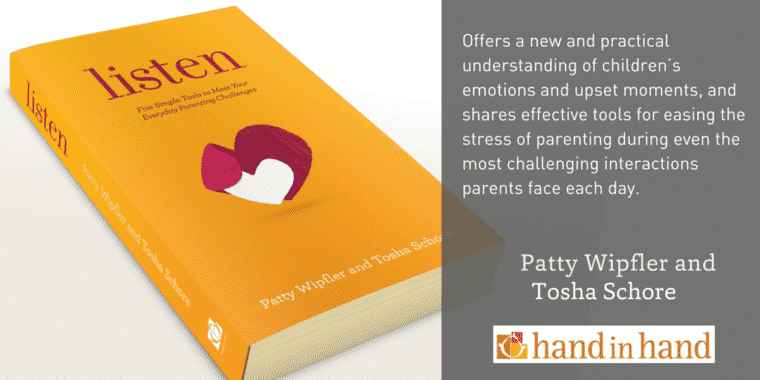 Q. Potty training has been a huge issue for our three-and-a-half-year-old daughter. She tells us when she has to go, wants privacy and is uncomfortable in dirty diapers. And she is TERRIFIED of going on the toilet. About six months ago, we told our daughter we had no more diapers and stuck with that story for a weekend. The weekend consisted of her throwing up from stress (we think), not going to the bathroom at all for twelve hour stretches while screaming that the poo was coming out, and when given a diaper shaking and crying when about to soil it. Needless to say we quit the experiment and she has been in diapers ever since.
Q. Potty training has been a huge issue for our three-and-a-half-year-old daughter. She tells us when she has to go, wants privacy and is uncomfortable in dirty diapers. And she is TERRIFIED of going on the toilet. About six months ago, we told our daughter we had no more diapers and stuck with that story for a weekend. The weekend consisted of her throwing up from stress (we think), not going to the bathroom at all for twelve hour stretches while screaming that the poo was coming out, and when given a diaper shaking and crying when about to soil it. Needless to say we quit the experiment and she has been in diapers ever since.
Other kids are starting to make fun of her, which upsets all of us. We have had two deaths in our family this year. She also has a new brother who was born in July, and has asthma and a deadly dairy allergy. So she's experienced stress in her life, for sure.
Other than this issue, she is happy, fun child with no other developmental concerns. I would appreciate any ideas you have!
A. Dear Parent:
You've been careful how you move her toward toileting. You did an experiment that brought up a lot of feelings for her, and backed off rather than push an agenda. I think that was wise. But where do you go from here?
There is a way to playfully tackle toileting fears. It's based on the fact that laughter releases tensions that have nailed a child's behavior into one rigid pattern. In particular, laughter helps children ease their fears, and they love to laugh, so it's an approach they are often pleased with.
We call this tool Playlistening. For Playlistening to work, the parent takes a less powerful role than the child, so that, for instance, the adult can, with a wink and a bit of sparkle, suddenly be “afraid” of even going in the bathroom. The parent says, “Ohhh, I have to pee so badly!” and jumps around, holding his/her crotch, tiptoeing toward the bathroom, pushing the door open, then running away – Eeeek! I don't want to go in there! The toilet is in there! Yikes!” Then, the parent jumps around again, “But I have to pee!”
You can also get laughter going by being silly—inviting her into the bathroom because you're going to pee like her daddy this time and you wonder if she wants to see you try to pee standing up. Or Daddy pees by standing on the toilet seat. Or try putting Cheerios in the toilet and have Daddy try to “shoot” them with his pee stream.
As you can see, these aren't experiments to try while visiting Grandma or when others are visiting you, but in the privacy of your home, watch to see what kind of play like this brings laughter, and then do more of it, as often as you can. The laughter will help her become less fearful, and feel better about herself—after all, suddenly, Mommy and Daddy are having troubles like hers, are peeing in strange ways, are “afraid” to flush the toilet, etc. This will be not only funny, but a big relief to her.
Try this and see what happens! Here's some great examples tried-and-tested by one mom:
Lots of songs: For example, “Do you hear a tinkle, tinkle tinkle do you hear a tinkle of the pee?” We inserted all of the different sounds that pee could possibly make while mom and dad were going (whoosh, spray…you get the picture)
Peeing and pooping on the cereals of our daughter's choice and then being horrified that Cheerios were in our poo and then laughing hysterically.
Dad standing on the toilet seat and peeing in to the toilet—once he even missed and peed all over himself! It was unplanned but extremely beneficial. She laughed very hard and long. So did we!
Changing the words to one of our daughter's favorite songs from “Down in the meadow, hop-a-doodle” to “Down in the toilet, bomb-a-doodle” for pooping.
Examine the color of food coloring in the bowl before and after peeing.
Oohing and ahhhing after going poop ourselves. (The more oohs and aahs the better!)
Asking our daughter to give instructions about how to grunt and which faces to make pre-poop.
Peeing in the shower. Oh yes, we did that. Sometimes together.
IF ANYONE HAD TOLD ME I'D BE DOING THINGS LIKE THIS AS A PARENT I NEVER WOULD HAVE BELIEVED THEM! But they make her laugh, and she's eager for these “games” and songs.”
These fun experiences are well and creatively done, and parents can find immense fun too stepping out of ‘adult decorum' so far! More importantly, all this play helps children to offload stress around peeing and pooping, and for some children, that will be enough to help them over the toileting hurdle.
If fears are deep-seated, you will need to try another Listening Tool called Staylistening. This strategy involves setting a simple, reasonable expectation, and then allowing a child to cry hard – perhaps even to struggle, tremble and thrash about – while keeping her safe and close so that she faces her fears and moves through her very intense feelings.
You can read more about the tool in Staylistening when potty training.
Children do move through their fears and come out the other side more flexible if a parent can lovingly stay and show confidence in the child. And then you can once again set up a night and a day when you say, “It's time to try using the toilet. No diapers until Sunday.”
Then, stay close, stay relaxed, and when she begins to cry or feel panicked, let her know that she's safe, that it feels scary but that you will stay with her until it feels better.
Then, hang on for a very passionate and intense emotional ride. Her fears will release in trembling, perspiring, screaming, and perhaps thrashing and trying to get away from you, or in this case, away from the toilet. Stay with her. It's not easy to do, but you can trust that, when she's through, things will be better.
Her fears are strong, so one long cry probably won't, by itself, open the door to the independent toileting kingdom. Don't worry. Pace yourself, and when you are relaxed and ready to set an expectation, for instance, “I'm going to help you stay on the toilet when you need to poo,” go ahead again, and let her cry and feel like it's a life-and-death experience. She's working through some experience that did feel like a life-and-death struggle.
Guide her through by telling her that she's safe, that you'll stay with her, that you'll make sure that no harm comes to her. And allow her to show you how awful that experience was, in the guise of having to be near or sit on the toilet. It's not a harmful thing, in reality, to sit on the toilet. So don't worry, you're not being a bad parent.
As long as you're really listening, really caring about her, and really keeping her safe, what's releasing is feelings from another time and place. Working through this wad of fear is what will, soon, make toileting possible for her.
For more on Playlistening and Staylistening download our booklets.

